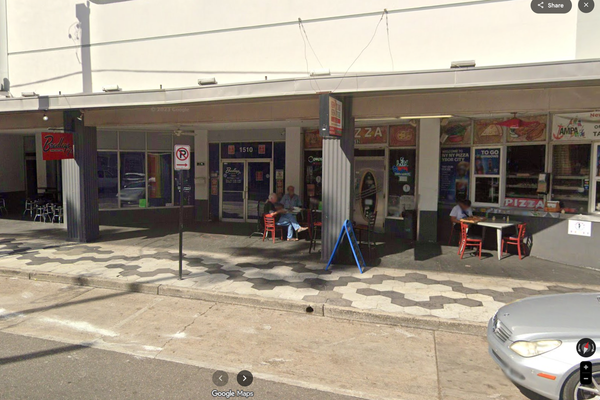
In the age of climate awareness and conscious consumerism, “green” has become more than a color—it’s a label, a marketing strategy, and a badge of honor. Shoppers around the globe are trying to make smarter, more sustainable decisions in an effort to reduce their carbon footprint. But sometimes, the products that are marketed as eco-friendly are anything but.
Hidden beneath layers of branding and buzzwords are complex supply chains, deceptive life cycles, and unintended consequences that do more harm than good. It turns out, not everything labeled “sustainable” actually helps the environment.
1. Bamboo-Based Fabrics
At first glance, bamboo clothing seems like a dream for sustainability advocates. Bamboo grows quickly and doesn’t require pesticides, making it appear like the ideal eco-crop. However, the transformation from bamboo stalk to soft fabric is highly chemical-intensive. The process often involves toxic solvents such as carbon disulfide, which can be harmful to both workers and the environment. What’s marketed as a natural fiber is actually rayon or viscose, which undergoes heavy processing.
2. Electric Scooters
Electric scooters were initially embraced as a fun, green solution to urban transport problems. However, their environmental impact tells a different story when factoring in production, short lifespans, and disposal. Many scooters last less than two years and are frequently charged using electricity sourced from fossil fuels. Add to that the emissions from transporting and collecting them nightly for charging, and their carbon footprint quickly grows. In some cases, walking or biking would’ve been the truly greener choice.
3. Compostable Plastics
Compostable plastics often give consumers a guilt-free feeling when tossing them into the trash or compost bin. Yet many of these items require industrial composting facilities to break down properly—something most cities do not offer. When they end up in landfills, they behave like traditional plastics and fail to decompose efficiently. Worse still, if they contaminate recycling streams, they can ruin entire batches of recyclable materials. What’s meant to reduce plastic pollution can ironically worsen it.
4. Organic Cotton
Cotton has long been criticized for its high water usage, so organic cotton seemed like a better alternative. While it avoids harmful pesticides and synthetic fertilizers, it often requires even more water than conventional cotton. Growing organic cotton also demands more land due to lower yields. If not produced locally, the environmental cost of transporting it adds up quickly. The label may say “organic,” but that doesn’t always mean it’s environmentally responsible.
5. Reusable Shopping Bags
Reusable shopping bags are a staple of eco-conscious living, but they’re not all created equal. Cotton tote bags, in particular, require a large amount of water, pesticides, and energy to produce. Studies have shown that a single cotton bag must be used hundreds or even thousands of times to offset its environmental footprint. Many people forget them or accumulate dozens, defeating the purpose entirely. Overproduction and underuse turn a good idea into a problematic one.

6. Solar Panels Made With Rare Earth Elements
Solar energy is widely seen as a cornerstone of the green revolution, but not all solar panels are created sustainably. Many panels rely on rare earth elements that are mined in ecologically destructive ways. The mining process often involves toxic waste and habitat destruction, especially in countries with weak environmental regulations. Additionally, the end-of-life disposal of panels presents new environmental challenges. Without proper recycling infrastructure, the long-term waste issue looms large.
7. Biodegradable Wet Wipes
Biodegradable wet wipes promise to break down harmlessly and reduce sewage blockages, but reality often doesn’t align with marketing. Many wipes still contain synthetic fibers that degrade slowly or only under specific conditions. They can clog water systems and damage marine ecosystems when flushed irresponsibly. The term “biodegradable” is frequently unregulated and misleading. Consumers assume quick decomposition, but many wipes linger in the environment for years.
8. Paper Straws
Paper straws emerged as the hero product of the anti-plastic movement, replacing their infamous plastic counterparts. But their production involves cutting down trees and using significant energy and water in manufacturing.
Some paper straws are coated with chemicals to prevent them from dissolving, making them non-recyclable or non-compostable. Their environmental advantage often hinges on how they’re produced and disposed of, which isn’t always ideal. They’re a well-meaning alternative that sometimes backfires.
9. Plant-Based “Compostable” Packaging
Plant-based packaging made from cornstarch or sugarcane sounds like an ideal swap for plastic, but the trade-offs are complicated. These materials often require industrial composting facilities and won’t break down in home compost bins or landfills. Moreover, growing the crops for packaging competes with food production and can drive up land and water use. Some versions even release methane when they decompose improperly. Their “compostable” label is not a free pass for eco-friendliness.
10. Green-Promoted Bottled Water
Some bottled water brands now boast eco-labels, recyclable packaging, and carbon-neutral pledges. Yet the underlying issue—bottling water in single-use containers—remains unsolved. Transporting bottled water, manufacturing the containers, and promoting disposable use patterns all contribute to a larger carbon footprint. These “green” labels may reduce consumer guilt, but they don’t tackle the systemic problem of waste. What looks like a cleaner option is still a part of the pollution cycle.
What Is The Definition Of “Green”?
In the rush to be environmentally conscious, it’s easy to be misled by labels and appearances. The truth is that sustainability isn’t always as simple as choosing the product with the greenest marketing. Real change requires looking beyond the packaging to understand the full life cycle and impact of what’s being consumed.
Consumers hold power not just in what they buy, but in how critically they evaluate “green” claims. What are your thoughts on the environmental trade-offs of these products? Share your perspective in the comments below.
Read More
Family Cargo Bikes: The Smart, Sustainable Choice for Modern Families
Sustainable Real Estate: Why Green Buildings Are the Future of Investment
The post 10 “Green” Products That Are Worse for the Environment appeared first on Clever Dude Personal Finance & Money.







